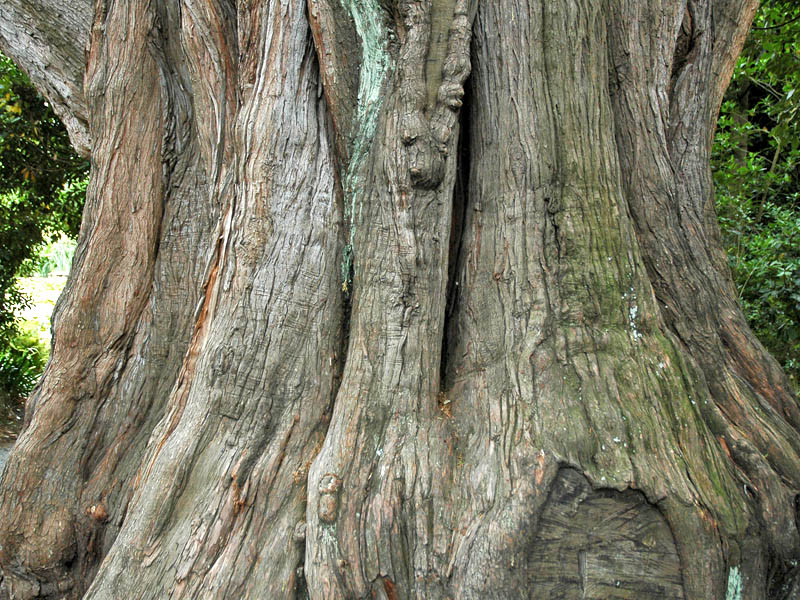| General Description | Monterey Cypress is a fast-growing single stemmed evergreen tree with intense green scale foliage. |
| ID Characteristic | The tree has very small branchlets approximately 1 mm in diameter completely covered with overlapping scale foliage and upright branching. Very large scaled spherical or elliptical seed pods which remain on the tree for many years give the species its name. |
| Shape | Pyramidal when young, becoming asymmetric and broad-spreading with age. |
| Landscape | An attractive tree which is grown as an ornamental in mild coastal climates around the world. In Australia and New Zealand it is a common hedge and windbreak plant, as the tree grows quickly and is densely pyramidal when young and takes well to pruning. |
| Propagation | Can be propagated by seed or clonally. If growing by seed, stratify seed for three weeks at 4°C before sowing in well-draining media, placing the seeds just under the surface. Care must be taken not to overwater as seeds are prone to damping off. Germination occurs within 2 months at 20°C. Once successful seedlings have grown large enough to handle transplant into individual pots. Continue growing inside greenhouse over their first winter, preferably longer to allow better chances of survival outdoors. Transplant to their final position after the final expected frosts of late spring. To propagate clonally, take a cutting between 7-20 cm in length in spring and treat with 1% IBA talc to promote effective rooting and grow in a humid environment. Once established, keep in a greenhouse over winter, then transplant to its final position after the last expected frosts in late spring. |
| Cultivation | Prefers acidic, well drained soil with full sun. Highly salt-tolerant but will suffer if planted in shade. |
| Pests | Inland in areas with hot summers, Monterey cypress often falls prey to Cypress canker (Seiridium cardinale) and rarely survives more than a few years. In saltwater coastal areas or places with mild cool summers this is not a concern. |
| Notable Specimens | ‘The Lone Cypress’, 17 Miles Drive, Monterey, California, United States of America. San Francisco Botanical Garden, San Francisco, California, United State of America. |
| Habitat | Saltwater coastal areas with acidic well-drained soil, cool summers and mild winters. |
| Bark/Stem Description | The bark is reddish brown on new growth, becoming light grey with age. It is fibrous with heavy vertical ridging and folds. |
| Flower/Leaf Bud Description | Buds are visible yellow-green globes averaging 1.2 mm in diameter on foliage tips, developing into scaled flowers an average of 6 mm in length. |
| Leaf Description | Foliage consists of evergreen scales, rich green in colour, imbricated densely enough to conceal the branchlets entirely. Younger specimens have pointed scales almost resembling awl-type leaves while older trees show more ovate scales. |
| Flower Description | Male flowers are terminal yellow cones approximately 5-6 mm in length and 2-3 mm in diameter, expanding to 8 mm in length when scales have opened and pollen sacs are empty. Each cone has 12-14 scales, and each scale opens to reveal 6-10 pollen sacs. |
| Fruit Description | The seed cones range from 2.5-3.8 cm in length and 1.7-2.5 cm in diameter, consistently larger than any other cypress. They are brown in colour with 8-12 scales. Cones take 2 years to ripen fully and may persist on the tree for many years. The fruit will crack open to release the seeds following periods of intense heat. |
| Colour Description | Vibrant bright to dark green. Stems are ruddy brown, becoming grey with age. The persistent seed cones are brown. |
| Texture Description | Fine. |
